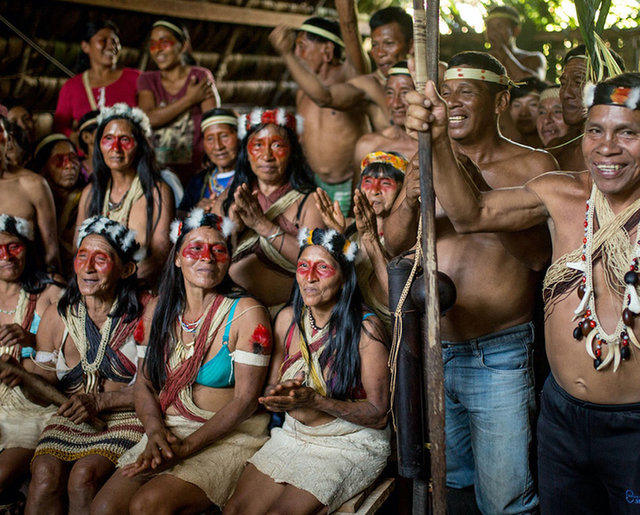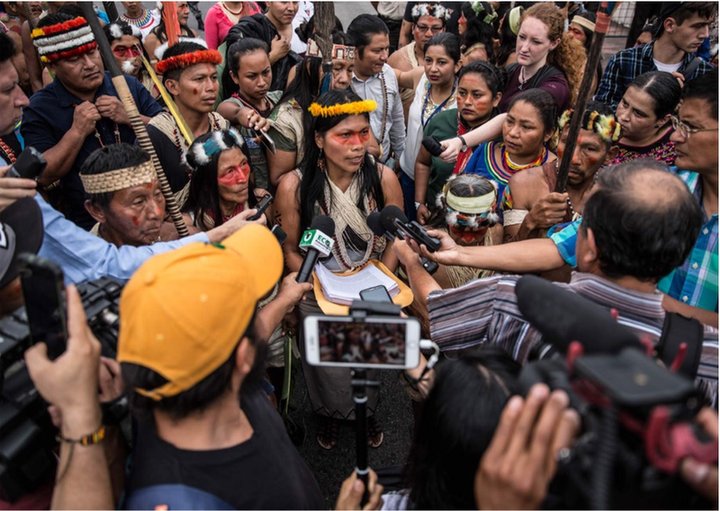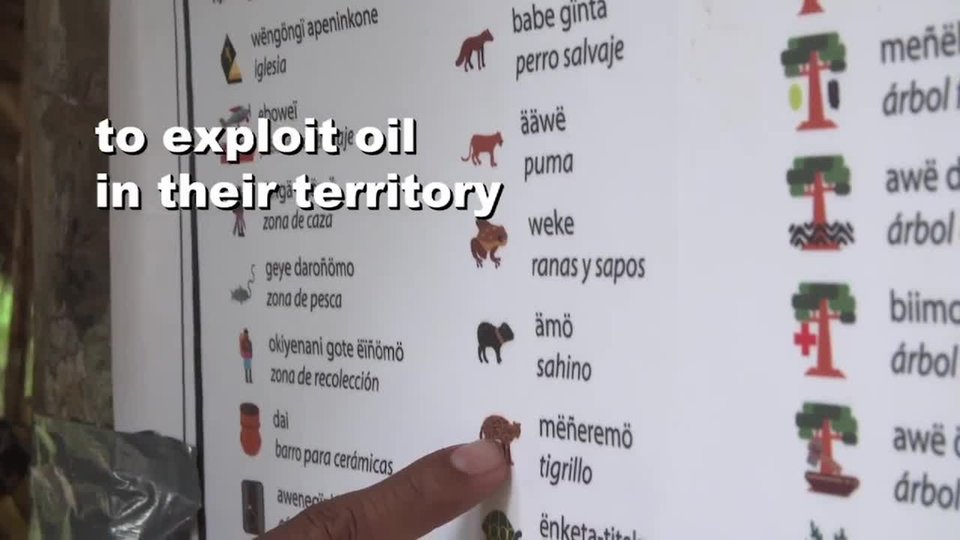

Waoranipeopletravelingbycanoeona river.


DrillingDown
In2012,thegovernmentofEcuadorwantedtooffernewdrillingrightstooilcompanies.ThedrillingareaincludedWaoranilands.ThegovernmentwasrequiredbylawtoexplaintheprosandconsofoildrillingtotheWaoraniandothercommunities.So,governmentrepresentativesflewintotherainforestandheldshort,rushedmeetings.ManyWaoranididnothavetimetotravelbyfootorcanoetoattendthesemeetings.TherepresentativesusedtechnicallanguagethatwashardforsomeWaoranitounderstand.Theyspokeonlyabouthowtheoilmoneywouldhelpthecommunity,nothurt it.
Afterward,theWaoranilearnedthatthegovernmenthaddividedupalargesectionoftheAmazon,includingtheirterritory.Thesesectionswouldbeauctionedofftooilcompanies.TheWaoranisectionwasnumber 22.
TheWaoranihaddefendedtheirlandfromSpanishconquistadores,rubbertappers,andloggers.Now,theyneededtodefenditagain.Butfirst,theyneededa leader.
ALeaderforHerPeople
NemonteNenquimoisa35-year-oldmotherwhowasbornandraisedintheWaoraniculture.Earlyinherchildhood,herfathermovedthefamilytoacommunitydeeperintherainforest.Hewantedthemtobeawayfromtheinfluenceofreligiousmissionaries.Nenquimo’schildhoodwasfilledwithswimmingintherainforestrivers,pickingwildfruit,andlisteningtohergrandmother’sandaunt’s
traditional songs.

aWaoranicommunity gathering

ThisWaoranielderusesablowpipeanddartsfor hunting.

Nenquimo’sgrandfather,Piyemo,wasarespectedwarrioranddefenderofWaoraniterritory.Piyemobelievedthattherainforestshouldbeprotectedasaninheritanceforhischildrenandgrandchildren.Fromhim,Nenquimolearnedthatthelandmustbedefendedagainstthosewhodonotmaketheir
homes there.
Nenquimolearnedfromhergrandmother,too.WomenintheWaoraninationhavetraditionallybeenthecaretakersoftheforest.Theywatchovertheplantsandanimalsandtellthemenwheretohuntandforwhichanimals.Nenquimowasalreadyacommunityleader.In2015,shehelpedleadtheWaoraniinaprojecttomaptheirancestral lands.
Elders,youngpeople,andchildrenworkedtogethertodrawandmapthesacredwaterways,animalbreedingsites,burialspots,fruittreegroves,andpaintingsontheirlands.Theyusedbothtraditionaldrawingmethods,likepaperandpencils,andmoderndeviceslikeGPSand cameras.
Thesemapswouldprovetobeinvaluableinthelaterfight.TheyshowedthedeeprelationshiptheWaoranihavetotheirlandandhowingraineditisintheir culture.

Surroundedbyherpeople,Nenquimospeakstoreportersaboutthecourt case.
TwelvecommunitieselectedNenquimoandfourotherwomentoleadthelawsuit.ItarguedthatthegovernmenthadnotgottenthefreeagreementoftheWaorani,whichwasrequiredbylaw.Theplannedauctioningofthelandswasillegal.“Thegovernmenttriedtosellourlandstotheoilcompanieswithoutourpermission,”Nenquimosaidlater.“Ourrainforestisourlife.Wedecidewhathappensinourlands.Wewillneversellourrainforesttotheoil companies.”
OnFebruary27,2019,theWaoraniofficiallysuedthegovernmentofEcuador.Theydidnotknowiftheywouldsucceed.But,theyknewtheyhadto try.

